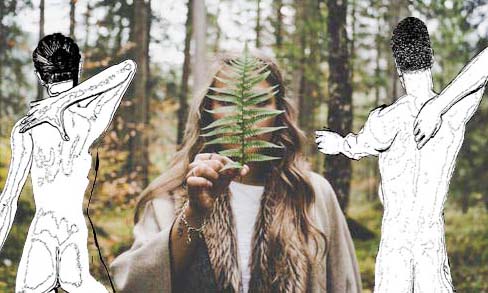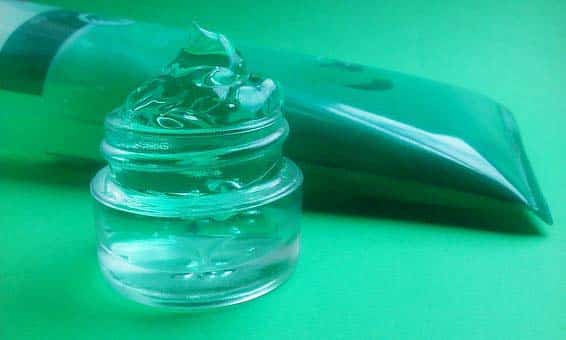Prickly heat is recognized as heat rashes, sweat rashes, in English term,
Miliaria Rubra in medico-term, and Ghamouri, Amhori in local or Hindi language.
It is a common skin problem that undergo many people in summer months and typically experienced by men, women, and kids who stay in hot and humid climates often resulting in excessive sweating and can cause the sweating glands to be blocked.
Infants or children are really susceptible to it because their hair follicles, sweating glands, and perspiration ducts are remain under developed and brings about quick blocking.
It is a common skin problem that undergo many people in summer months and typically experienced by men, women, and kids who stay in hot and humid climates often resulting in excessive sweating and can cause the sweating glands to be blocked.
Infants or children are really susceptible to it because their hair follicles, sweating glands, and perspiration ducts are remain under developed and brings about quick blocking.
What can Causes Prickly Heat?
Wearing of synthetic clothes.
Hot and humid weather.
Blockage in the sweating glands.
Excessive physical activities, work outs or exercises that delivers too
much sweating.
Excess usage of oil-based cosmetics or beauty products.
Certain prescriptions (Attention deficit hyperactivity disorder, or blood pressure)
Symptoms Of Prickly Heat
Red rashes or small blisters on the skin.
Itching and irritation.
What exactly are the best ways to treat a Prickly Heat/ heat rash? How to Prevent Prickly Heat?
Try to maintain a good ventilation and air flow of your room.
Always wear light, loose, and cotton
garments in summer months.
Bathing with cold water is a good activity to avoid perspiration that lead
to heat rash or prickly heat.
Drink a great deals of cold water during the summer season. Other than
this, drink plenty of fruits and vegetables juices like water melon, apples,
orange, lemon, cucumber, carrot, beet, lettuce to stay hydrated.
Consumption of coconut water, sugarcane juice, curd, yoghurt,
butter milk etc. during the summer season to stay cool and healthy.
Avoid direct sunlight to prevent perspiration and try to stay static in
your room under a fan or air-cooler to get rid of Miliaria Rubra.
Change the baby napkins soon after wetting.
Try not to use oil based cosmetics, harsh soap, as they can block pores
and always use mild skin lotions.
Limit intake of heavy to digest foods, spicy foods, hot beverages like tea,
coffee etc.
Stay far from alcoholic beverages or liquor like wine, whisky, beer etc.
and give up smoking as well.
Do not scrach prickly heat blisters. During itching sensation, use talcum
powders like Nycil Classic
Prickly Heat
Powder, Dermicool Prickly Heat Powder, Pond's Talcum powder, Cinthol Strong
Talcum powder, Boroplus Prickly heat powder, Calendula Prickly Powder, Himalaya’s Prickly Heat Baby Powder,
Johnson's baby powder etc. to keep your skin dried up in humid conditions and get well outcomes.
A paste of Multani Soil (Fuller’s earth) with Rose water has been trusted to
deal with prickly heat, because it has cooling properties that is competent to lessen the swelling,
irritation, and itching sensations and help get relief from prickly heat.
Cold Treatment with ice cubes - Crush some ice
cubes and mix it in bath water and wash the affected region to bring a cool
effect in the skin.
Oatmeal bath is another folk remedy to deal with prickly heat irritation.
Always make an effort to keep the skin dry.
Make a paste of Neem / Indian lilac
leaves and karpura / camphor and apply this blend over affected region for just
one hour then wash with cold water to get relief from irritation and itching of
prickly heat. As Neem water bath is an age old remedy and very popular folk
treatment to take care of different kinds of skin diseases including prickly
heat and after bath you can massage your body with coconut oil or olive oil to
make the skin soft.
Rubbing of musk melon or watermelon pulp may bring a
soothing effect in heat rashes. It really is a time tested home remedy that can
protect skin from heat rashes.
Apply Aloe Vera and Cucumber paste daily for about 10 days to attain the
best result in condition of heat rashes.
Raw potato is another best home remedy to fight with prickly heat or heat rashes. Make a paste of raw potato and this paste can be applied on heat rashes for 30 minutes then wash it off with cold water.
Sandalwood is a well known natural antiseptic and anti-inflammatory
ingredient that is having cooling property and a paste made of sandalwood and
rose water can give best outcomes in the case of prickly heat.
Include lots of fresh and organic fruits in your eating regimen, which
possessed cooling characteristics like cucumber, ananas, snake cucumber, water
melon, musk melon, pomegranate etc.
Keep away from heavy oily foods, deep fried foods, and sweets.
Baking Soda / Mitha soda - It is really an alkalizing powder, exfoliates
your skin and treats heat rashes. you can utilize it with mixing up in cold
water and apply over prickly heat to get favorable advantages.
Epsom Salt bath is also a good method to fight with prickly heat.
What is the home remedy for prickly heat rash?
Shweta chandan - Sandalwood Powder - Santalum album.
Aaloo - Raw Potato - Solanum tuberosum.
Muskmelon - Cantaloupe - Cucumis melo.
Tarbooja - Watermelon - Citrullus lanatus.
Nettle Leaves - Stinging Nettle - Urtica dioica.
Amalaki - Indian Gooseberries - Phyllanthus emblica.
Kumari - Aloe Vera - Aloe Barbadensis.
Seb - Apples - Malus.
Pyaz - Onions - Allium cepa.
Dhaniya - Coriander Seeds - Coriandrum sativum.
Mehandi - Henna Powder - Lawsonia inermis.
Lavender - Lavandula - Lavandula angustifolia.
Vrikshamla - Kokum - Garcinia indica.
Nimboo - Lime - Citrus aurantiifolia.
Khira - Cucumber - Cucumis sativus.
Watery rose apple - Water Cherry - Syzygium aqueum.
Satavari - Ekalkanto - Asparagus racemosus.
Ankol / Ankota - Alangium salvifolium.
Cypress spurge - Graveyard Spurge - Euphorbia cyparissias.
Bitter gourd - Bitter melon - Momordica charantia.
Grapes - Common Grape Vine - Vitis vinifera.
Jeera - Cumin - Cuminum cyminum.
Black plum - Java Plum - Syzygium cumini.
Baragad - Banyan - Ficus
benghalensis.
Ananas - Pineapple - Ananas comosus.
Common Oat - Haber - Avena sativa.
Soapnut - Soapberries - Sapindus trifoliatus.
Anaar - Pomegranate - Punica granatum.
Papita - Papaya - Carica papaya.
Khus Grass - Vetiver - Chrysopogon zizanioides.
Dub - Conch grass - Cynodon dactylon.
Camomile - Kamilla - Matricaria chamomilla.
______________________________READ IT ALSO
Home Remedies for Stye - Causes & Symptoms
Management of warts with Ayurvedic system of Medicine
Eczema : Take Advantage Of Ayurvedic Medicine
Effective Ayurveda Medicines for Syphilis
Why You Are Still An Amateur At Filariasis Treatment
Ayurvedic Treatment Details for Gonorrhea / Piyumeha
Ayurvedic solutions for Spermatorrhoea - Involuntary loss of semen
You Can Get More Pimples / Acne Ayurvedic Treatment While Spending Less
Leucoderma / Vitiligo & its successful Treatment with Ayurveda
_______________________________














No comments:
Post a Comment